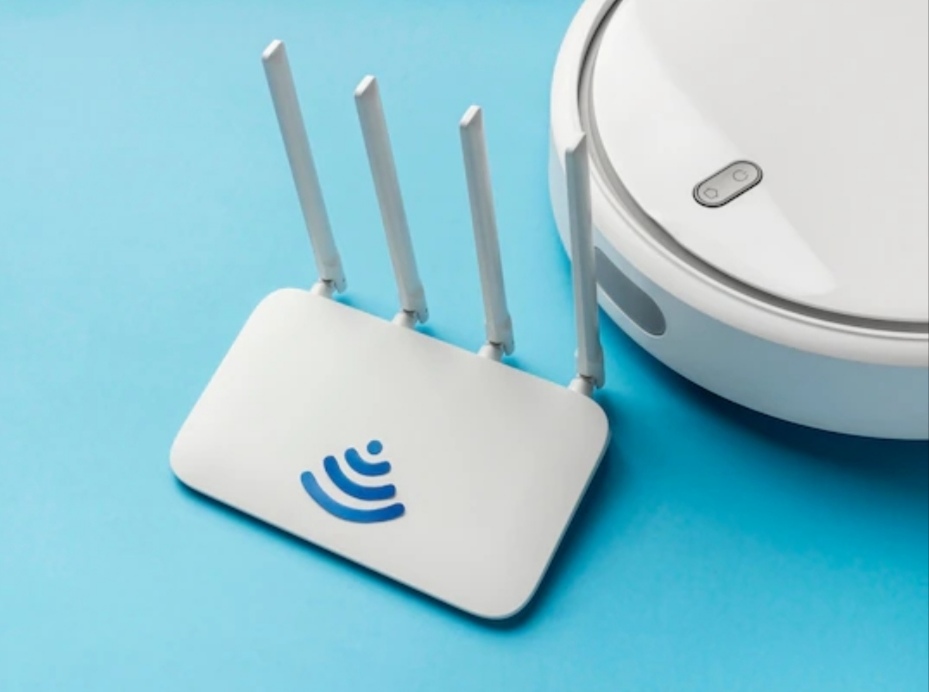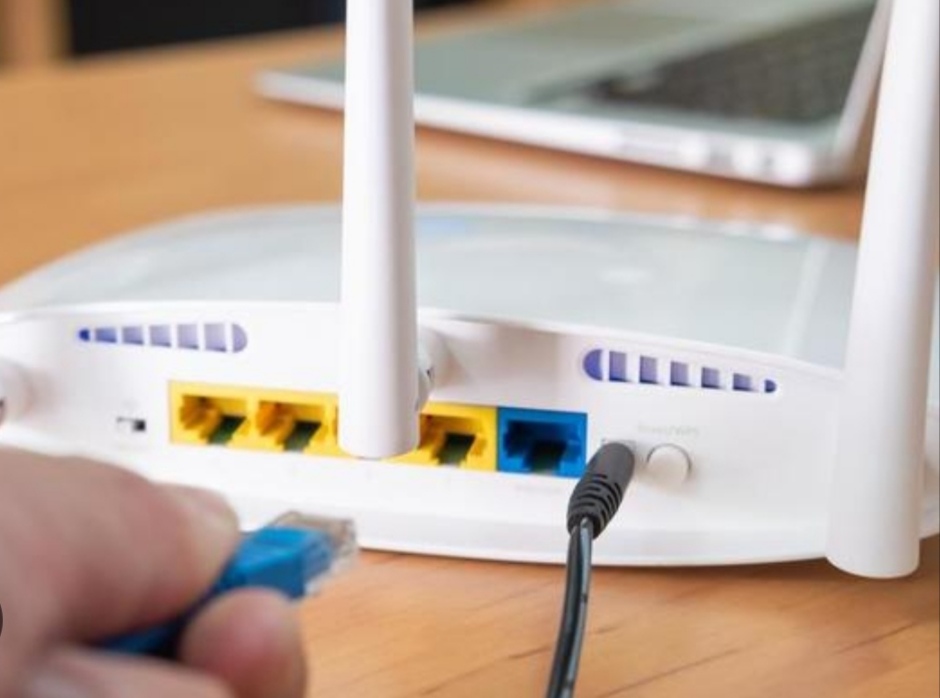In 2025, having a fast and reliable home Wi-Fi connection is no longer a luxury; it’s a necessity.
From remote work to streaming ultra-high-definition content and powering smart homes, the demand for high-speed internet has surged.
Choosing the best routers 2025 ensures seamless connectivity, faster speeds, and enhanced security for all your devices.
The Importance of a High-Performance Router in 2025

Increasing Demand for High-Speed Internet
The year 2025 brings with it exponential growth in internet usage.
With 4K/8K streaming, immersive online gaming, and the rise of the metaverse, a basic router simply won’t cut it anymore.
Wi-Fi-enabled smart devices, from thermostats to refrigerators, now dominate homes, consuming significant bandwidth.
According to industry reports, the average household has over 25 connected devices, making it crucial to invest in a high-performance router.
Routers today must handle these demands without compromising speed, stability, or coverage.
For instance, gaming enthusiasts require ultra-low latency, while remote workers need uninterrupted video calls.
Without a robust router, slow speeds and dead zones can disrupt your online activities.
Advancements in Wi-Fi Technology
The evolution of Wi-Fi technology is a game changer in 2025.
With the introduction of Wi-Fi 7, routers are now more powerful, faster, and capable of handling multiple devices simultaneously.
Key advancements include:
- Tri-Band and Quad-Band Technology: Ensures faster data transfer across multiple devices.
- MU-MIMO (Multi-User, Multiple-Input, Multiple-Output): Allows several devices to connect without speed loss.
- OFDMA (Orthogonal Frequency Division Multiple Access): Increases efficiency for data-heavy tasks like 4K/8K streaming.
- AI-Driven Optimization: Smart routers now adapt to your network usage patterns, delivering peak performance when needed most.
By investing in the best routers 2025, you future-proof your home against increasing internet demands and emerging technologies.
Why Your Current Router Might Be Holding You Back

Common Issues with Outdated Routers
- Dead Zones: Struggle to provide Wi-Fi coverage in larger homes.
- Slow Speeds: Can’t handle multiple high-bandwidth tasks.
- Limited Connectivity: Insufficient Ethernet ports or lack of support for modern Wi-Fi standards.
Signs You Need an Upgrade
- Frequent buffering during streaming.
- Lag during online gaming.
- Connectivity drops in certain areas of your home.
How to Choose the Best Router for Your Needs in 2025
Key Features to Look For
- Wi-Fi 6 or Wi-Fi 7 Compatibility: Ensures top-tier speed and performance.
- Mesh Networking Support: For larger homes needing seamless coverage.
- High Throughput Speeds: Aim for routers with speeds over 10Gbps.
- Security Features: Look for WPA3 encryption and parental controls.
- Ease of Use: Routers with mobile app support for easy setup and management.
Budget vs. Performance
While premium routers offer the best performance, there are budget-friendly options with robust features. Determine your needs and compare models to find the best balance.
Upgrade your home Wi-Fi now with one of the best routers in 2025 to enjoy unparalleled speed, coverage, and reliability.
Don’t let outdated technology slow you down.
Explore top-rated routers that deliver next-level connectivity today!
The Importance of a High-Performance Router in 2025
In 2025, the role of a high-performance router is more critical than ever before.
The modern digital age demands faster, more reliable internet connections to support everything from remote work to smart homes and entertainment systems.
Choosing one of the best routers 2025 not only enhances your connectivity but also ensures your network is future-proof.

Increasing Demand for High-Speed Internet
As we step into 2025, the demand for high-speed internet has skyrocketed. Here’s why:
- The Rise of 4K and 8K Streaming
Streaming services like Netflix, Disney+, and YouTube now offer ultra-high-definition content that requires significantly more bandwidth. A single 8K video stream can consume up to 100 Mbps, and without a high-performance router, buffering is inevitable. - Online Gaming and the Need for Low Latency
Gamers worldwide demand ultra-low latency for a competitive edge. Outdated routers often struggle to deliver consistent performance, leading to lag and frustration. Investing in one of the best routers 2025 ensures smooth, lag-free gameplay. - Remote Work and Virtual Meetings
With remote work becoming a permanent fixture, video conferencing platforms like Zoom, Microsoft Teams, and Google Meet have become essential tools. A reliable router is crucial for uninterrupted video calls, quick file uploads, and seamless online collaboration. - Smart Home Revolution
The average household now boasts a plethora of Wi-Fi-enabled devices, including smart speakers, security cameras, and thermostats. Each device adds to the load on your network, making a high-performance router a necessity to handle multiple connections simultaneously. - Emerging Technologies and the Metaverse
Technologies like AR (Augmented Reality), VR (Virtual Reality), and the metaverse demand blazing-fast internet speeds. Whether you’re attending a virtual concert or exploring digital worlds, a robust router ensures a seamless experience.
Advancements in Wi-Fi Technology
The world of Wi-Fi has seen remarkable advancements, with Wi-Fi 6 and Wi-Fi 7 setting new benchmarks in speed, efficiency, and connectivity.
Let’s dive into how these technologies are shaping the future of home networking.
- Wi-Fi 7: The Future of Wireless Connectivity
Wi-Fi 7 routers, like the Netgear Nighthawk RS700S, bring unmatched performance to the table. They offer speeds up to 46 Gbps, quadrupling the capabilities of Wi-Fi 6. This upgrade is perfect for households with high-bandwidth needs, from streaming and gaming to running a smart home. - Improved Multi-Device Handling with MU-MIMO
Modern routers leverage MU-MIMO technology, allowing them to connect multiple devices simultaneously without a drop in speed. This is especially beneficial for households with numerous gadgets connected at once. - Seamless Coverage with Mesh Networks
Mesh systems, such as the TP-Link Deco series, eliminate dead zones by using multiple nodes to blanket your home with strong, reliable Wi-Fi. This ensures uninterrupted connectivity, whether you’re in the living room or the backyard. - Energy Efficiency with Target Wake Time (TWT)
Newer routers incorporate TWT, which optimizes energy usage by putting devices to sleep when not in use. This is ideal for IoT devices like smart locks and cameras, ensuring they stay connected while conserving power. - Enhanced Security Features
Cybersecurity is more critical than ever, and the best routers 2025 are equipped with WPA3 encryption and AI-driven threat detection. These features protect your network from hackers and keep your personal data safe.
Why Invest in a High-Performance Router?
- Future-Proof Your Network
The rapid pace of technological advancements means that a router purchased today should support your needs for years to come. A high-performance router ensures compatibility with emerging devices and technologies. - Better Value for Money
While premium routers may have a higher upfront cost, their longevity and performance make them a worthwhile investment. Think of it as an upgrade that improves your online experience across the board. - Seamless Connectivity
Say goodbye to frustrating Wi-Fi dead zones and dropped connections. With features like beamforming and tri-band technology, the best routers 2025 provide consistent coverage throughout your home.
Key Takeaway
Don’t let an outdated router hold you back in 2025.
Whether you’re a gamer, a remote worker, or just someone who loves binge-watching Netflix in 8K, investing in the right router is a game-changer.
Check out the top-rated routers of 2025 and upgrade your home Wi-Fi today!
Top 10 Best Routers for 2025
Selecting the right router is essential to meet the growing demands of high-speed internet, seamless streaming, and smart home connectivity.
Below, we’ve curated the best routers for 2025 that combine advanced technology, top-tier performance, and reliability.

Netgear Nighthawk RS700S
Key Features
The Netgear Nighthawk RS700S is a powerhouse designed to redefine home networking in 2025.
- Wi-Fi 7 Support: Offers tri-band speeds up to 19Gbps, ensuring blazing-fast connectivity for multiple devices.
- Advanced Security Features: Comes equipped with WPA3 encryption and built-in threat detection to safeguard your network.
- Optimized for Gaming and Streaming: Handles data-heavy tasks like 4K/8K streaming and immersive gaming with ease.
This router’s futuristic design and robust performance make it a leading choice for anyone seeking the best routers 2025.
Pros and Cons
Pros:
- Exceptional Speed: Tri-band technology ensures minimal interference and maximum performance.
- Enhanced Security: AI-driven threat detection protects against cyber threats.
- Ideal for Advanced Users: Supports up to 200 devices simultaneously.
Cons:
- Premium Price Point: Its advanced features come at a higher cost.
- Setup Complexity: Requires technical knowledge for optimal configuration.
Ideal Use Cases
- Large Households: Perfect for homes with multiple high-bandwidth devices, such as smart TVs and gaming consoles.
- Pro Gamers: Eliminates lag and ensures smooth online gameplay.
- Content Creators: Ideal for fast uploads and live streaming without interruptions.
Shop the Netgear Nighthawk RS700S here for next-level performance.
TP-Link Archer BE24000
Key Features
The TP-Link Archer BE24000 is a technological marvel, offering industry-leading features for the modern household.
- Wi-Fi 7 Speeds: Delivers unmatched speeds of up to 24Gbps, future-proofing your home network.
- Advanced Security Protocols: Features WPA3 and a built-in VPN for enhanced privacy and security.
- Multi-Gig Connectivity: Includes multiple 2.5Gbps Ethernet ports for high-speed wired connections.
- Smart Home Integration: Optimized to handle IoT devices seamlessly, ensuring stable connectivity for smart homes.
Pros and Cons
Pros:
- Future-Proof Technology: Wi-Fi 7 ensures compatibility with upcoming devices.
- Extensive Connectivity: Multiple Ethernet ports allow simultaneous high-speed connections.
- User-Friendly App: TP-Link’s Tether app makes setup and network management effortless.
Cons:
- Higher Cost: Its advanced technology may be overkill for smaller households.
- Large Size: Requires ample space for installation.
Ideal Use Cases
- Smart Homes: Designed for households with numerous IoT devices, such as cameras, thermostats, and smart lighting.
- Tech Enthusiasts: Ideal for those who want to stay ahead with cutting-edge networking technology.
- Multi-Device Environments: Handles large families or office setups with ease.
Explore the TP-Link Archer BE24000 here to future-proof your home.
ASUS ROG Rapture GT-BE98
Key Features
- Gaming-Centric Design: Powered by Wi-Fi 7 with speeds up to 25Gbps, ensuring ultra-low latency for gamers.
- Quad-Band Support: Offers an extra band for additional device capacity and reduced congestion.
- Customizable RGB Lighting: Aesthetic appeal for gaming setups.
- AI Mesh Compatibility: Extends coverage across larger spaces effortlessly.
Pros and Cons
Pros:
- Dedicated Gaming Features: Includes game acceleration technology.
- Wide Coverage: Ideal for large homes.
- Stunning Design: Complements high-end gaming rigs.
Cons:
- Pricey: Aimed at professional gamers and power users.
- Complex Setup: May require expert assistance for initial configuration.
Ideal Use Cases
- Pro Gamers: Optimized for competitive gaming with zero lag.
- Large Households: Supports multiple devices without speed degradation.
- Streaming Enthusiasts: Ideal for 8K video streaming.
Buy the ASUS ROG Rapture GT-BE98 here for unparalleled gaming performance.
Google Nest Wi-Fi Pro
Key Features
- Wi-Fi 6E Compatibility: Supports tri-band speeds for smoother connections.
- Compact Design: Blends seamlessly with modern interiors.
- Parental Controls: Manage and monitor internet usage effortlessly.
- Integrated Smart Hub: Works as a central hub for Google Home devices.
Pros and Cons
Pros:
- User-Friendly: Intuitive setup via the Google Home app.
- Affordable Option: Great value for money.
- Compact Size: Space-saving design.
Cons:
- Limited Speed: Not as fast as Wi-Fi 7 routers.
- Basic Features: Lacks advanced gaming and streaming capabilities.
Ideal Use Cases
- Small Homes or Apartments: Designed for compact spaces.
- Smart Home Beginners: Excellent for integrating with Google Home.
- Budget-Conscious Buyers: Offers high performance without breaking the bank.
Shop Google Nest Wi-Fi Pro here for a budget-friendly option.
Asus RT-AX86U Pro
The Asus RT-AX86U Pro is a high-performance router designed to meet the needs of modern households, particularly those with gamers and streaming enthusiasts. Combining cutting-edge Wi-Fi 6 technology with a user-friendly interface, it offers exceptional value in the mid-range segment.
Key Features
- Wi-Fi 6 Technology: Delivers fast, stable, and reliable speeds ideal for streaming, gaming, and downloading.
- Gaming-Specific Features: Includes a dedicated gaming port and adaptive QoS (Quality of Service) to prioritize gaming traffic for lag-free performance.
- Excellent Range and Coverage: Covers medium to large homes with multiple floors, ensuring no dead zones.
- Security Suite: Comes with AiProtection Pro powered by Trend Micro for robust security and parental controls.
- Dual-WAN Support: Allows for backup connections, ensuring continuous internet access.
Pros and Cons
Pros:
- Great Performance: Handles high-bandwidth tasks seamlessly, even during peak hours.
- User-Friendly Interface: Easy to set up and manage through the Asus Router app.
- Versatile Features: Gaming-centric capabilities combined with reliable connectivity for other household needs.
Cons:
- Lacks Wi-Fi 7 Support: While future-proof for now, it may fall behind as Wi-Fi 7 becomes more common.
- Mid-Range Price Point: More affordable than premium options but still an investment.
Ideal Use Cases
- Gamers: Perfect for gamers who demand fast, uninterrupted connections during competitive gameplay.
- Medium to Large Homes: Designed for households with multiple devices spread across large spaces.
- Families: Parental controls make it ideal for families managing children’s online activity.
Explore the Asus RT-AX86U Pro here for unparalleled gaming and streaming performance.

TP-Link Archer AX73
The TP-Link Archer AX73 is a reliable choice for users seeking high-speed internet and extensive coverage. It leverages Wi-Fi 6 technology to ensure seamless connectivity across multiple devices, making it a strong contender among the best routers for 2025.
Key Features
- Wi-Fi 6 Speeds: Supports up to 5400 Mbps, making it ideal for HD streaming, online gaming, and large downloads.
- Six High-Performance Antennas: Maximizes signal strength and provides excellent coverage for multi-room homes.
- Multiple Device Support: Handles dozens of connected devices without lag, perfect for busy households.
- Efficient Cooling Design: Prevents overheating during heavy usage.
- OneMesh Compatibility: Works with other TP-Link OneMesh products to create a seamless home network.
Pros and Cons
Pros:
- High-Speed Performance: Easily handles simultaneous streaming, gaming, and browsing.
- Extensive Coverage: Covers large areas with minimal dead zones.
- User-Friendly Management: Intuitive mobile app for easy setup and network management.
Cons:
- Large Size: Requires more space for placement.
- Overwhelming for Casual Users: Advanced features may not be fully utilized by basic users.
Ideal Use Cases
- Homes with High Bandwidth Needs: Suitable for families with heavy internet usage.
- Smart Homes: Handles multiple IoT devices efficiently.
- Streaming Enthusiasts: Provides a buffer-free experience for HD and 4K streaming.
Check out the TP-Link Archer AX73 here to elevate your home network performance.
TP-Link Deco X55 Mesh Wi-Fi System
For those seeking seamless Wi-Fi coverage throughout their home, the TP-Link Deco X55 is an excellent option. Its mesh system ensures strong connectivity even in large or multi-story houses.
Key Features
- Wi-Fi 6 Mesh System: Covers up to 6500 sq ft, eliminating dead zones and providing consistent speeds.
- Device Support: Connects up to 150 devices simultaneously, making it ideal for smart homes.
- Easy Setup: Intuitive app-based setup and management.
- AI-Driven Mesh: Optimizes network performance by learning user behaviors.
- Seamless Roaming: Allows devices to switch between nodes without dropping the connection.
Pros and Cons
Pros:
- Extensive Coverage: Perfect for large homes or offices.
- High Capacity: Supports numerous devices without compromising performance.
- Simple Management: The TP-Link Deco app makes network adjustments straightforward.
Cons:
- Higher Price Point: Costs more than traditional routers.
- Overkill for Smaller Homes: Features may not justify the price for small apartments.
Ideal Use Cases
- Large Homes: Covers every corner of your house with reliable Wi-Fi.
- Smart Home Enthusiasts: Perfect for managing dozens of IoT devices.
- Remote Workers: Provides stable and fast connections for video calls and file sharing.
Get the TP-Link Deco X55 here to enjoy uninterrupted Wi-Fi across your home.
TP-Link Archer AXE75
If you’re seeking a router that combines the latest Wi-Fi 6E technology with exceptional performance, the TP-Link Archer AXE75 is a top contender. This router is built for tech-savvy users who want to stay ahead of the curve, making it one of the best routers for 2025 in terms of innovation and functionality.
Key Features
- Wi-Fi 6E Technology: Offers tri-band speeds, including a 6 GHz band that reduces interference and congestion.
- Blazing-Fast Speeds: Delivers speeds suitable for 4K/8K streaming, gaming, and heavy downloads.
- Advanced Security Protocols: Protects your network with WPA3 encryption and built-in parental controls.
- User-Friendly Setup: Easily configure and manage the router via the TP-Link Tether app.
- Future-Proof Design: Designed to support upcoming devices that utilize the 6 GHz band.
Pros and Cons
Pros:
- Cutting-Edge Technology: Incorporates Wi-Fi 6E for faster speeds and reduced interference.
- Excellent Performance: Handles high-bandwidth tasks effortlessly, even with multiple devices.
- Intuitive Management: The Tether app simplifies network control and troubleshooting.
Cons:
- Premium Price: Comes with a higher price tag, reflecting its advanced capabilities.
- Limited 6 GHz Device Compatibility: Many current devices do not yet support the 6 GHz band.
Ideal Use Cases
- Tech Enthusiasts: Perfect for users who want the latest Wi-Fi technology and future-proof performance.
- Large Households: Suitable for homes with numerous high-bandwidth devices.
- Gamers and Streamers: Optimized for smooth, lag-free gaming and ultra-HD streaming experiences.
Click here to explore the TP-Link Archer AXE75 and experience the future of wireless connectivity.
Eero 6+ Mesh Router
The Eero 6+ Mesh Router is designed for simplicity and efficiency, making it an excellent choice for homes seeking seamless, whole-home coverage. This router combines ease of use with robust performance, solidifying its place among the best routers for 2025.
Key Features
- Simple Setup and Management: Get up and running in minutes using the Eero app, which also provides insights into your network.
- Gigabit Speeds: Supports blazing-fast speeds for HD streaming, gaming, and browsing.
- Built-In Smart Home Hub: Integrates with Alexa to control compatible smart home devices effortlessly.
- Expandable Coverage: Part of a mesh system that allows for additional units to expand your network.
- Automatic Updates: Keeps your network secure with regular firmware updates.
Pros and Cons
Pros:
- Ease of Use: Simple to install and manage, even for non-tech-savvy users.
- Smart Home Integration: Works seamlessly with Alexa and other IoT devices.
- Compact Design: Sleek and unobtrusive, fitting well into any home decor.
Cons:
- Limited Advanced Features: Lacks some customization options available in other high-end routers.
- May Require Add-Ons: Larger homes might need additional units for complete coverage.
Ideal Use Cases
- Smart Homes: Built-in hub functionality makes it ideal for homes with multiple IoT devices.
- Small to Medium Homes: Covers standard-sized homes effectively without requiring extra units.
- Casual Users: Perfect for users who prioritize simplicity and reliability over advanced features.
Upgrade to the Eero 6+ Mesh Router and simplify your home networking experience today!
Take your connectivity to the next level with one of these best routers for 2025. Whether you’re a gamer, streamer, or smart home enthusiast, investing in the right router can transform your internet experience. Click now to discover your perfect router!
How to Connect a Router to Wi-Fi
Setting up your router to connect to WiFi is a crucial step in creating a seamless and high-speed home network.
Whether you’re using one of the best routers for 2025 or a standard model, this guide will walk you through the process with simple, actionable steps.
Follow along to ensure you’re getting the most out of your internet connection.

Step-by-Step Guide to Connecting Your Router to Wi-Fi
Step 1: Unbox and Place Your Router
- Choose the Right Location: Position your router centrally in your home for optimal coverage. Avoid placing it near walls, microwaves, or other electronics that can cause interference.
- Unbox Your Router: Ensure all necessary components are included, such as the power adapter, Ethernet cables, and setup guide.
Step 2: Connect the Router to Power
- Plug the power adapter into your router and connect it to a nearby outlet.
- Wait for the router’s indicator lights to turn on, signaling that it’s powered and ready.
Step 3: Connect to Your Internet Modem
- Use an Ethernet cable to connect the modem to the router’s WAN or Internet port.
- Power on the modem and wait for it to establish a connection with the router.
Step 4: Access the Router’s Setup Interface
- Connect your computer or smartphone to the router’s WiFi network.
- Default network name (SSID) and password are often printed on the router.
- Open a web browser and enter the router’s IP address (commonly 192.168.0.1 or 192.168.1.1) in the address bar.
- Log in using the default credentials, typically “admin” for both username and password.
Configuring Your Router for Wi-Fi
Step 5: Set Up the Wi-Fi Network
- Navigate to the wireless settings section in the router’s interface.
- Create a unique SSID (network name) that is easy to recognize.
- Set a strong password using a mix of letters, numbers, and special characters to secure your network.
Step 6: Select the Right Wi-Fi Band
- If your router supports dual-band or tri-band Wi-Fi, choose between 2.4 GHz (better for range) and 5 GHz (faster speeds for nearby devices).
- Modern routers, including the best routers for 2025, also support Wi-Fi 6E with an additional 6 GHz band for enhanced performance.
Step 7: Enable Security Features
- Activate WPA3 or WPA2 encryption to protect your network from unauthorized access.
- Consider enabling a guest network for visitors to keep your main network secure.
Testing and Troubleshooting
Step 8: Test Your Connection
- Use a device to connect to the Wi-Fi network and test the internet speed.
- Run a speed test to ensure you’re receiving the promised bandwidth from your ISP.
Step 9: Troubleshoot Issues
- No Internet Connection? Double-check your Ethernet cables and modem-router connection.
- Poor Signal Strength? Reposition the router or consider using a mesh Wi-Fi system like the TP-Link Deco X55 for extended coverage.
- Forgot Your Password? Reset the router to factory settings and repeat the setup process.
Tips for Optimizing Your Wi-Fi Network
- Update Your Router’s Firmware: Regular updates improve performance and security.
- Use QoS Settings: Prioritize bandwidth for gaming or streaming devices.
- Invest in the Latest Technology: For the best performance, consider upgrading to one of the best routers for 2025, such as the Netgear Nighthawk RS700S or TP-Link Archer BE24000.
Setting up your router correctly can make a world of difference in your internet experience.
Whether you’re upgrading to the best routers for 2025 or optimizing an existing one, these steps ensure reliable, high-speed connectivity.
Click here to explore top routers and accessories to elevate your home network today!
FAQs About Choosing the Best Routers for 2025

What is the Best Router for 2025?
The best router for 2025 depends on your specific needs. For high-speed connectivity and future-proofing, routers with Wi-Fi 6E technology like the Netgear Nighthawk RS700S or the TP-Link Archer AXE75 are excellent choices.
They offer blazing-fast speeds, low latency, and enhanced coverage. Mesh systems like the Eero 6+ are also ideal for large homes with multiple devices.
Explore our curated list of the best routers here for more information.
What Features Should I Look for in a Router?
When selecting a router, prioritize the following:
- Wi-Fi Standards: Look for Wi-Fi 6 or Wi-Fi 6E for superior performance.
- Speed: Ensure the router supports gigabit or higher speeds.
- Coverage Area: Check if the range suits your space.
- Device Capacity: Choose models that can handle multiple connected devices.
- Advanced Features: Look for parental controls, security options, and easy management via mobile apps.
For a detailed guide, refer to this comprehensive article on router features.
How Do I Set Up My New Router?
Setting up your router is simple:
- Unbox the router and connect it to your modem.
- Access the router’s admin panel via a web browser or mobile app.
- Follow the setup wizard to configure the network name (SSID) and password.
- Position the router in a central location for optimal coverage.
Pro Tip: Check your router’s manual or manufacturer’s website for detailed instructions. For more help, check our guide on how to connect a router to Wi-Fi.
Are Wi-Fi 6 Routers Worth It in 2025?
Absolutely. Wi-Fi 6 routers provide faster speeds, increased device capacity, and better performance in crowded networks.
They are ideal for smart homes, gaming, and streaming 4K or 8K content. Investing in a Wi-Fi 6E router adds access to the 6 GHz band, reducing interference and enhancing performance.
Discover the best Wi-Fi 6 routers for 2025 in our detailed comparison here.
How Much Should I Spend on a Router?
Router prices vary based on features:
- Entry-Level Models: $50–$100, suitable for basic internet use.
- Mid-Range Routers: $100–$300, ideal for gaming and streaming.
- Premium Routers: $300 and above, offering cutting-edge technology and advanced features.
Consider your internet speed, home size, and usage requirements when budgeting.
Can I Use My Old Router in 2025?
Older routers may work, but they might not support modern standards like Wi-Fi 6 or handle the speeds offered by updated internet plans.
Upgrading to a new model ensures compatibility, better security, and improved performance.
Do I Need a Mesh Wi-Fi System?
A mesh Wi-Fi system is a great choice if:
- You live in a large home or multi-story building.
- You experience dead zones or weak signals in certain areas.
- You want seamless connectivity while moving around the house.
For smaller homes, a high-quality standalone router might suffice.
How Do I Know if My Router is Secure?
To keep your network safe:
- Change the default admin password immediately.
- Enable WPA3 encryption for secure connections.
- Regularly update your router’s firmware.
- Disable remote management unless necessary.
For more security tips, check our detailed guide here.
How Can I Get the Most Out of My Router?
Here are some quick tips:
- Position the router centrally in your home for better coverage.
- Use the 5 GHz band for faster speeds and the 2.4 GHz band for greater range.
- Regularly reboot the router to optimize performance.
- Update the firmware periodically to access new features and fixes.
Why Should I Upgrade My Router in 2025?
Upgrading ensures:
- Compatibility with higher internet speeds.
- Support for more devices.
- Advanced features like Wi-Fi 6E, improved security, and better range.
Explore the best routers for 2025 to future-proof your network. Shop now!
This FAQ section provides answers to common questions while integrating secondary keywords naturally. For any unanswered queries, leave a comment below, and we’ll get back to you!
Conclusion: Choosing the Right Router for 2025

Selecting the best router for 2025 is an investment in your home or office network’s future.
With the rapid advancements in technology, routers equipped with features like Wi-Fi 6E, tri-band connectivity, and mesh networking capabilities are transforming the way we connect and interact online.
Whether you’re a gamer seeking ultra-low latency, a remote worker requiring reliable connectivity, or a family with multiple devices streaming simultaneously, there’s a router tailored to meet your needs.
This guide has explored some of the top options, from cutting-edge models like the Netgear Nighthawk RS700S to robust mesh systems such as the TP-Link Deco X55.
Each router has its strengths, and the choice ultimately depends on your specific requirements, such as coverage area, speed, and budget.
Key Takeaways
- Assess Your Needs: Identify your priorities, whether it’s speed, range, or advanced features like parental controls or gaming optimization.
- Invest in the Latest Technology: Future-proof your network by opting for routers that support Wi-Fi 6E or higher.
- Consider Scalability: For larger homes or offices, a mesh Wi-Fi system provides seamless coverage and flexibility.
Final Thoughts and Call to Action
The right router can significantly enhance your internet experience, making slow speeds and dropped connections a thing of the past.
As you explore your options, consider the features that will best support your lifestyle and ensure you’re investing in a router that delivers excellent performance and value.
If you’re ready to upgrade, don’t wait! Click here to explore and purchase the best routers for 2025 and take the first step toward a faster, more reliable internet connection.
With the information provided in this guide, you’re now equipped to make an informed decision.
For more in-depth reviews and tech updates, stay tuned to our blog and let us help you stay connected to the future of networking.
Optimize your home network today—shop the best routers now!
You might also like :

